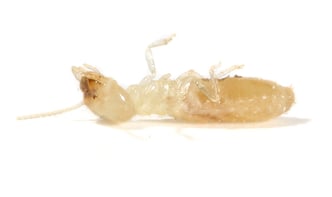
Termite colonies have undertaker workers to manage and dispose of dead colony members. This task is very important for overall colony health.
Being eusocial, termites have a caste system where nestmates have different responsibilities and work together to contribute to the success of the colony. Castes have specialized morphologies based on their specialized tasks.
Some termite species are not considered structurally important because they do not feed on wood.
Termites have evolved many interesting, unusual, and useful defense mechanisms. Some species have soldiers that defend the nest with:
Even more unusual is the evidence of older worker termites (Neocapritermes taracua) who develop substances that can rupture and burst toxic material onto their opponents during aggressive or threatening interactions.
Subscribe to our website and follow us on Facebook & Twitter for promotions, product launches, product info and much more!
Resources:
O’Brien, R.W., & Slaytor, M. (1982). Role of Microorganisms in the Metabolism of Termites. Australian Journal of Biological Sciences 35, 239-262. https://doi.org/10.1071/BI9820239
Scheffrahn, R.H., Bourguignon, T., Akama, P.D., Sillam-Dussès, D., & Šobotník, J. (2018). Roisinitermes ebogoensis gen. & sp. n., an outstanding drywood termite with snapping soldiers from Cameroon (Isoptera, Kalotermitidae). ZooKeys 787: 91-105. https://doi.org/10.3897/zookeys.787.28195
Shi, J., Zhang, C., Huang, S., Merchant, A., Sun, Q., Zhou, C., Haynes, K. F., & Zhou, X. (2021). Managing Corpses From Different Castes in the Eastern Subterranean Termite. Annals of the Entomological Society of America, 114(5), 662–671. https://doi.org/10.1093/aesa/saaa060
Sobotnik, J., Bourguignon, T., Hanus, R., Demianova, Z., Pytelkova, J., Mares, M., … Roisin, Y. (2012). Explosive Backpacks in Old Termite Workers. Science, 337(6093), 436–436. doi:10.1126/science.1219129
Watanabe, D., Gotoh, H., Miura, T., & Maekawa, K. (2014). Social interactions affecting caste development through physiological actions in termites. Frontiers in Physiology, 5. doi:10.3389/fphys.2014.00127